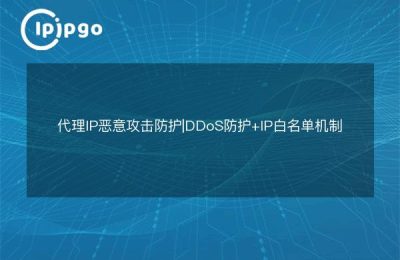
When using HttpClient for web requests, verifying the validity of the proxy IP is an important step in ensuring the success of the request. By validating the proxy IP, you can confirm that the proxy is working properly and ensure that the data crawling or access task runs smoothly. Below, we will describe how to verify the proxy IP using HttpClient.
Step 1: Set HttpClient to use proxy IPs
First, you need to configure HttpClient to use a proxy IP. Here is a simple Java example:
import java.net.*;
import org.apache.http.HttpHost; import org.apache.http.impl.client.
import org.apache.http.impl.client.CloseableHttpClient; import org.apache.http.impl.client.
import org.apache.http.impl.client.HttpClients; import org.apache.http.impl.client.
import org.apache.http.client.methods.CloseableHttpResponse; import org.apache.http.impl.client.
import org.apache.http.client.methods.HttpGet; import org.apache.http.client.methods.
public class ProxyVerifier {
public static void main(String[] args) {
String proxyHost = "your_proxy_ip";
int proxyPort = 8080; // replace with your proxy port
HttpHost proxy = new HttpHost(proxyHost, proxyPort);
CloseableHttpClient httpClient = HttpClients.custom()
.setProxy(proxy)
.setProxy(proxy) .build();
try {
HttpGet request = new HttpGet("http://www.example.com");
CloseableHttpResponse response = httpClient.execute(request);
System.out.println("Response Code: " + response.getStatusLine().getStatusCode());
response.close(); } catch (Exception e) { response.getStatusLine()
} catch (Exception e) {
System.out.println("Error: " + e.getMessage()); }
}
}
}Step 2: Send the request and check the response
In the above example, we send an HTTP GET request via HttpClient and use the proxy IP to access the target website. The key to verifying the proxy IP is to check the response status code:
- 200 OK: Indicates that the proxy IP is working normally and can successfully access the target website.
- Other status codes: may indicate that the proxy IP is invalid, blocked, or the target website is inaccessible.
Step 3: Dealing with anomalies
When using proxy IPs, you may encounter various exceptions such as timeouts, connection failures, and so on. Make sure your code catches and handles these exceptions so that you can take action if the proxy IP fails:
catch (SocketTimeoutException e) {
System.out.println("Timeout: Proxy might be slow or unreachable."); } catch (IOException e {
} catch (IOException e) {
System.out.println("I/O error: " + e.getMessage()); }
}
Step 4: Automatically switch proxy IP
To improve the success rate of requests, you can implement a mechanism that automatically switches to the next available proxy IP when the proxy IP fails.This typically involves maintaining a pool of proxy IPs and selecting a new proxy IP from the pool when a request fails.
summarize
Validating the proxy IP of HttpClient is a critical step in ensuring the success of your web requests. By setting up the proxy correctly, checking the response status, and handling exceptions, you can effectively verify the validity of the proxy IP and ensure that your web application is running robustly. We hope this guide will help you make better use of HttpClient and proxy IPs.








